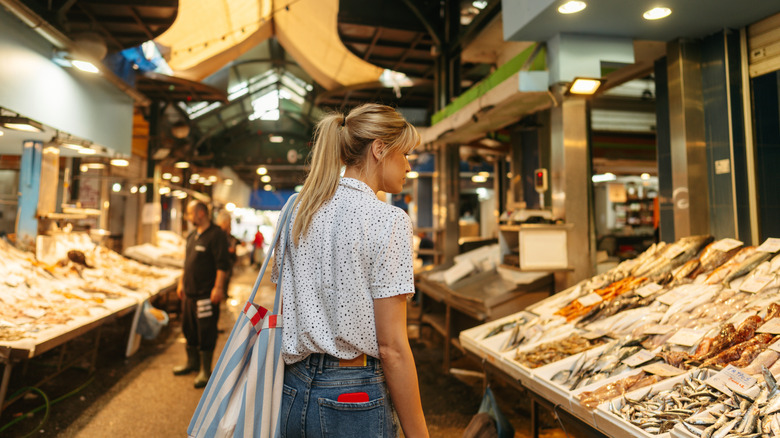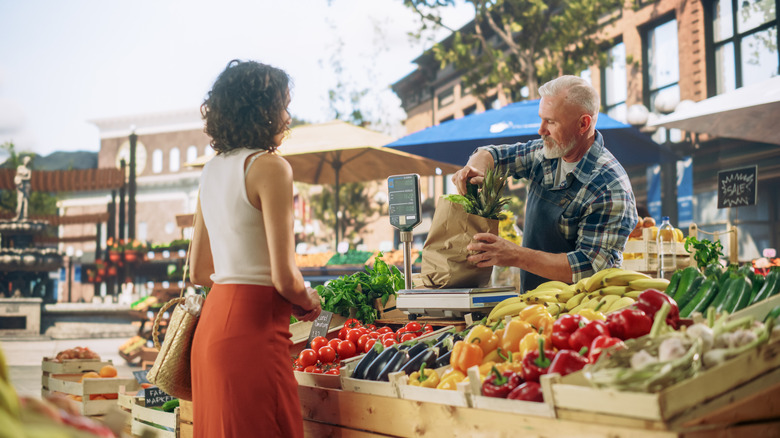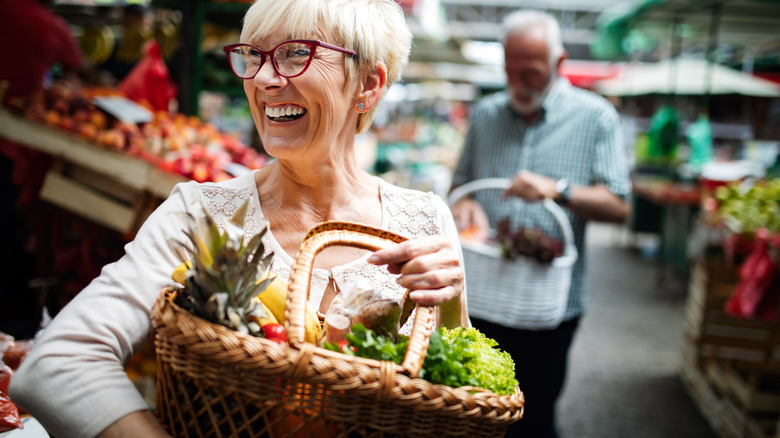The Rookie Mistake To Avoid When Visiting European Markets
Markets are a cornerstone of daily life across Europe. Across the vast continent, bustling food, flower, and antique markets pop up almost daily throughout the week, catering to locals and tourists looking for fresh specialties and souvenirs. From covered food markets serving up local delicacies to sprawling city squares brimming with fresh produce vendors, and must-visit Christmas markets that pop up around the holidays, these vibrant spaces offer visitors a unique shopping experience — all while providing a glimpse into authentic local life.
While markets aren't necessarily anything unfamiliar in the U.S. — plenty of cities across the country host farmer's markets of their own — they do operate differently than their American counterparts, especially when it comes to choosing, handling, and buying produce. One of the most important differences that catches visitors off guard? You should never touch a vendor's fruits and vegetables before buying them.
While most travelers from the U.S. are used to squeezing peaches and prodding tomatoes to check for ripeness, this practice is actually considered unhygienic and disrespectful in European markets. Instead, what you'll need to do is communicate with vendors about when you plan to eat the produce and, in turn, they'll choose the perfect items for your needs — without risking damage or contamination from wandering fingers.
How to follow basic European market etiquette
Along with never touching the merchandise, there are plenty of other tips and customs to help you navigate a European market experience. First, there's the pricing issue. Ideally, you'll want to avoid getting too purse-happy at European markets that don't clearly display prices. Vendors at unmarked stalls might charge tourists significantly more than locals for the same items — which means you might end up paying four times the going rate for something as simple as a banana. Yikes!
Along with that, another important market custom is to always greet your vendor. A simple "bonjour," "buongiorno," or "buenos días" goes a long way in these types of situations, and acknowledging the seller before starting your transaction is considered a basic courtesy. Similarly, it's worth mentioning that patience is key. European vendors typically serve one customer at a time, giving each shopper their full attention. This means you might need to wait patiently while the person ahead of you selects their items — even if it takes longer than you'd expect. While this might seem inefficient to visitors used to quick transactions, it's a mark of respect that vendors show to each customer, especially regulars who shop there weekly.
More practical tips for your market visit
Whether you're planning to pick up picnic supplies or shop for the week ahead, it's always a great idea to bring cash in small denominations. While some vendors might accept cards — especially at larger, busier markets — many of them prefer to deal with cash. Paying in exact change is also greatly appreciated. Besides, fumbling around with large bills can mark you as an obvious tourist (and potentially lead to higher prices).
Timing-wise, most market connoisseurs recommend that you arrive either 30 to 60 minutes after opening when vendors are fully set up and ready to serve, or about half an hour before closing when you might score some good deals. Just keep in mind that end-of-day produce might not be at peak freshness — even if the price is right — so plan accordingly if you're shopping for specific items.
Finally, make sure you always pack a few reusable shopping bags or totes for your purchases. More often than not, the small plastic bags provided by vendors are flimsy and prone to breaking (if they're even available at all), which means you might struggle to carry all of your goodies back to your accommodation.


